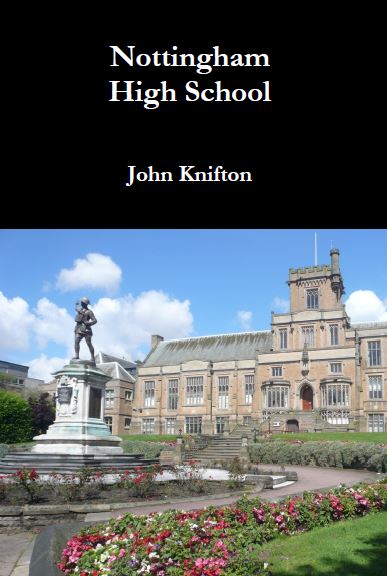There has been enormous controversy of late about the fact that a good many of our old statues were erected to honour people whose lives contain some rather unpleasant details, hiding away and hopefully forgotten, or even not noticed in all the glory and the wonderfulness.
Arguably, this phenomenon may have had its origins in England years and years ago with the controversy about Jimmy Savile, that favourite son of the BBC and of their audiences. Wikipedia says…..
“He raised an estimated £40 million for charities and, during his lifetime, was widely praised for his personal qualities and as a fund-raiser.”
But he had a very large and dirty secret…….
“After his death, hundreds of allegations of sexual abuse were made against him, leading the police to conclude that Savile had been a predatory sex offender—possibly one of Britain’s most prolific. There had been allegations during his lifetime, but they were dismissed and accusers ignored or disbelieved.”
Here’s Savile with Cardinal O’Brien, a man who, according to the Guardian newspaper at least, had “admitted in general terms to sexual conduct that had “fallen beneath the standards expected of me”.”:

So what was done?
“Within a month of the child abuse scandal emerging, many places and organisations named after or connected to Savile were renamed or had his name removed. A memorial plaque on the wall of Savile’s former home in Scarborough was removed in early October 2012 after it was defaced with graffiti. A wooden statue of Savile at Scotstoun Leisure Centre in Glasgow was also removed around the same time. Signs on a footpath in Scarborough named “Savile’s View” were removed. Savile’s Hall, the conference centre at the Royal Armouries Museum in Leeds, was renamed “New Dock Hall.”
You can read about the two sides of this very strange and sad man here.
Here’s Savile’s Hall in Leeds. I took this picture years ago while we waited for the coach to come and pick us up. I must confess, I was attracted by young Marilyn. I’m sorry about the blurry focus but my hand was shaking:

People guilty of child abuse are a relatively easy target to identify. So are those with a background in slavery. Having “slavery” appear on your CV is not good.
And both slavery and child abuse are, of course, huge “no-no”s if you want a statue of yourself to be erected somewhere after your death.
A large number of Kings and Queens of England have been enthusiastic buyers and sellers of slaves. I have written two blog posts about this subject. Here’s a link to one, and here’s a link to the other.
The guilty parties included:
Queen Elizabeth the First, the family of King Charles II, King Charles II, King James II, Queen Anne, King George I. King George II, King George III, King George IV and King William IV.
It wasn’t just our beloved Royal Family though. It was ten of the first twelve Presidents of the United States. (Well done, John Adams and his son John Quincy Adams.) The guilty parties were George Washington (317 slaves), Thomas Jefferson (600+), James Madison (100+), James Monroe (75), Andrew Jackson (200), Martin van Buren (1), William Henry Harrison (11), John Tyler (70), James Polk, (25) and Zachary Taylor (less than 150).
Zachary Taylor was the last president-in-office to own slaves and Ulysses S. Grant was the last president to have ever owned a slave. This picture shows a president and his slaves at cotton picking time, but the internet seems a little confused about which one:

What superb irony that Thomas Jefferson won the slave owning contest with a minimum of 600 slaves.
He was the man who wrote if not the most beautiful sentence in the English language, then certainly the most important:
“We hold these truths to be self-evident, that all men are created equal, that they are endowed by their creator with certain unalienable rights, that among these are life, liberty and the pursuit of happiness.”
In my scheme of things the people above may well lose their statues. That’s a lot of statues to take down. Slavery was not illegal in those days, but the 25-or-so people listed above would all have said they were Christians and putting it bluntly,
Jesus Christ did not keep slaves.
Just look at the expressions on these faces. Even the dogs are sad.
One major point to be made before we finish is that the descendants of slaves, in a great many countries of the world, do not want continually to be reminded of how their ancestors were mistreated in one of the great crimes of human history but instead they want to look forward to a better life. And I would be OK with that too.
What I think is that it would be a good idea to have the controversial statues put in a museum with explanations about why these previously valued men and women have been removed from public gaze. People would then have the choice of looking at them, or not.





You make a very valid point. I think it would be wrong to destroy the statues because back in the day they lived in a different world. But a museum as you suggest would be a compromise and a very positive compromise at that. There is definitely a lot more to be said.
And I have a good few blog posts yet to say it!
I’m sure every city would be able to find a building to use as a statue museum. And I would hope that that museum could have captions about the statues that were for and against them. That would help educate children about how to judge people.
There seems to me to be a difference of historical perspective when we are talking of public figures who are offending current norms
I take your point, but I do feel that if statues genuinely upset large numbers of people then we should be kind enough to take them down.
In many cases people don’t know who the statues represent anyway. I had never heard of Edward Colston, but clearly, a lot of people had. We should try to respect their, no doubt, genuine feelings.
There is not one of us that has not made a mistake. I doubt the honesty of people who refuse to give second chances. When it comes to the statues, we can not judge people from the past with 2021 eyes.
Well, we may have to agree to differ here. All I can say is that Jefferson was criticised at the time for having slaves and he seems never to have wanted to free them, whatever he wrote.
For me, what is important with the statues is the fact that sizeable numbers of people are genuinely upset by them and if that is the case, that is enough reason to take them off to a museum, especially as they come from a period so long ago.
I respect your reply.
And I respect your right to hold your opinions. That, for me, is what real freedom is all about. Everybody is allowed to have their own opinion. There are precious few countries nowadays where that is the case, and, if anything, their number is going down.
The “woke” censorship is making it harder every day.
You raise a very interesting point and one which will keep historians occupied for many a long time hence. Here in Bristol we saw Edward Colston defenestrated in effigy, yet our local stately home, Dodington Hall, built with the proceeds from sugar plantations manned by slaves, still stands and is now owned by Sir James Dyson of vacuum–cleaner fame. Many people quote Lord Acton’s famous adage about power and its corrupting effects. Lesser known is the second line of that adage: “Great men are almost always bad men.”
I like your second line, Chris! As for stately homes, I have always remained outside while my wife and daughter went round to look at the carpets and the curtains. I have no interest in wealth accumulated by being a slave owner, or by exploiting local people such as my Grandad, who, in 1905, worked a five and a half day week, around 50 hours or more, but had no vote and no medical care. That’s presumably the reason that there are no statues of either Wragg or Knowles in Woodville !!
Certainly a (recently) controversial subject. I think as many others do, that judging someone’s past activities through current eyes is rather ‘unfair’. Laws will change, what is morally and socially acceptable will also change, so we cannot continually judge history by modern standards. Should we remove every statue, portrait of reference to past Kings and Queens simply because they had slaves? I think not, yet they are as ‘guilty’ as anyone targeted today. We cannot rewrite history, therefore we have to accept that it happened and learn from it, not remove it from the landscape and sweep it under the carpet.
You are certainly right about the kings and queens of England being keen slave owners and traffickers, as was the Church of England. We differ though, in this idea of judging history by modern standards. Those kings and queens were the heads of the Church of England, so why had they not read Commandment No 5 “Thou shalt not kill” ?
I think we should consider the idea of museums where the statues of bad people can be displayed, with the people who disapprove of them given a chance to have their say.
Certainly a shameful episode in our history – not our finest hour. The way slavery was abolished wasn’t our finest hour either. The slave owners were compensated by a massive payout from the government of £20m equivalent to £300 bn in todays money. The payout was so large that we only paid off the debt in 2015 and public taxes were used to pay the debt. This means that the current descendants of the slaves that are now uk taxpayers helped to pay the debt. The slave owners got all the money and the slaves themselves didn’t get a penny. Talk about “unfair”
And from what I have read. once the slaves were “freed” they were not allowed to leave the estates of their masters. What kind of freedom is that?
You may have seen it already, but may I recommend “Black and British” by David Olusoga. It was a book that changed my own views enormously, and it still remains one of the best £5 I’ve ever spent.
Thank you for sharing!!… I agree with you about the statues… people idolize the statue for what the statue represents, not necessarily from a historical standpoint, and that is not always a good thing… the eyes of 2021 are the eyes of change and looking at things (including statues) differently… 🙂
Until we meet again..
May your troubles be less
Your blessings be more
And nothing but happiness
Come through your door
(Irish Saying)
You are absolutely right. So many people do not realise that there is good history (supplying a starving Europe with food in the post war period) and bad history (You choose an example, I’m sure you’ve come across a few).
Unless you get rid of the bad history and eliminate it from the people’s consciousness, they will not be able to tell bad from good and, if you are German, say, you will soon be putting all the statues of Adolf Hitler back on their plinths.
I’ll line up pretty completely with those who see a mistake in trying to remove history. Any “great man (or woman)” will also have great failings. It’s simply the nature of humanity. Every one of us has things we are less than proud of. Add to that the difficulty, impossibility even, of judging people from a different time. One example occurs to me, many people seem to believe a “white lie”, told to protect another’s feeling is a harmless thing. And yet other times and cultures would consider any falsehood to seriously besmirch one’s honor. Some day, anyone looking at our own time would be staggered by rampant social dishonesty and image engineering (like on social media).
In that context, modern views on slavery are grossly simplistic and naive. No doubt its “bad” and a sin of our forefathers many struggle to make peace with. Yet its a historic constant and continues, at least covertly, around the world today. Looking at things in a full historic context is often illuminating, and I do know a little about American presidents. Like the fact George Washington freed all his slaves, at a time when it was culturally radical to do so. And US Grant married into a slave holding family, and was “gifted” one slave from that side of the family. He promptly freed that slave, in spite of the fact he was a poor farmer at the time and could have likely used the help.
Not only is there a historical context, but the span of human life too. Over the course of 70 or so years of life a person will commit a lot of sins/mistakes, some of which they may later fix while others they may revel in. People are always complex, and at some level every single one of us is a hypocrite; unless we are completely amoral and have no conscience at all.
Ultimately that all means I believe in celebrating our history. Both the heroes and villains of it. All while recognizing every one of them is truly somewhere in between.
Well, as I said to GP above, if freedom is to be preserved, then “Everybody is allowed to have their own opinion”.
I don’t see, though, how you can celebrate the villains of history. We British, for example, would have to celebrate two well known military victories. The first is the Duke of Cumberland from 1745, the so-called “Butcher” Cumberland:
https://en.wikipedia.org/wiki/Prince_William,_Duke_of_Cumberland
and the second is Reginald Dyer’s killing of unarmed Indian civilians in 1919:
https://en.wikipedia.org/wiki/Jallianwala_Bagh_massacre
To me there is good history and bad history. We need to emphasise the good history and to get rid of the bad. Statues that upset a large number of people, for me, can be replaced by statues of people that everybody can accept.
In Germany, for example, the nation has turned over a huge new leaf, and every single statue of the Nazis has gone, as has every swastika on every building and wall.
Instead, the statues are all to the brave people who lost their lives trying to fight Nazism such as Sophie Scholl.
https://en.wikipedia.org/wiki/Sophie_Scholl
She now has more schools named after her than anybody else in the country and, to me, that is right.